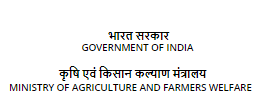CRISPR/Cas9-IAA9 Binary Vector Construct

Background:
Seed lessness is a desired trait in elite cultivars intended for the fastidious consumers who find the seeds to impair the processing quality of the fruits. Seed lessness can be of advantage for processed tomato products because the energy invested in separating the seeds from the processed product can be saved. Thus parthenocarpy can be beneficial to seed companies as it assists in protecting their varieties. Auxin/indole-3-acetic acid (Aux/IAA) proteins are transcriptional regulators involved in auxin-regulated plant development, and a loss-of-function IAA9 mutant tomato formed parthenocarpy fruit (Wang et al. 2005), suggesting that IAA9 is also a negative regulator of auxin involved in regulating parthenocarpy fruit set. IAA9 protein prevents ovary development prior to pollination by acting as a negative regulator of auxin response pathways. Downregulation of IAA9 causes the release of early auxin-responsive genes, thus mimicking the burst of auxin produced in the ovary during pollination leading to parthenocarpy. The present innovation named "CRISPR/Cas9-IAA9 binary vector construct" was created to generate parthenocarpy tomato fruits.
Technology Details:
Parthenocarpy is the growth of ovary into a seedless fruit in the absence of pollination or/fertilization. IAA9 protein prevents ovary development prior to pollination by acting as a negative regulator of auxin response pathways. IAA9 is a transcriptional repressor of auxin signaling; IAA9 repressor binds to IAA3 (early auxin-responsive gene) promoter and inhibits its action. Downregulation of IAA9 causes the release of early auxin-responsive genes, thus mimicking the burst of auxin produced in the ovary during pollination leading to parthenocarpy. IAA9 (CDS-1047 bases) a member of the Aux/IAA family (Subfamily IV) genes, IAA9 acts to repress the auxin response pathway (Figure 1).
Figure 1: A model depicting the structure of SlIAA9 protein. Domain I - Repressor domain – interacts with ARF and binds to the promoter region of early auxin-responsive genes for egg: IAA3 gene Domain II - Interacting domain – with the component of the ubiquitin-proteasome pathway. Domain III and IV – involved in homodimerization and heterodimerization among the proteins of Aux/IAA family; and also regulates dimerization of similar domains belong to ARFs proteins/TF. Extended N-terminal domain and 150 extra amino acids (as compared to all other Aux/IAA proteins) between domain I and II (where (pxx)2 motif is part of it) are the typical features of IAA9 protein.
To generate parthenocarpic tomato fruits, CRISPR/Cas9-IAA9 binary vector construct was created. CRISPR/Cas9 technology was exploited to knockout the SlIAA9 gene (Solyc01g093960). SlIAA9 consists of 6 exons and its encoded protein has 4 domains as depicted in Figure 1. Synthetic gRNA was designed to target the first exon of SlIAA9 (Figure 2A). It was incorporated into a Cas9 expressing binary vector and confirmed by restriction analysis and sequencing (figure 2 &3).
Figure 2: Overview of IAA9 gene structure and IAA9 target gRNA cloning into shuttle vector: A) Schematic of the IAA9 gene structure consisting of 6 exons with the complete CDS size of 1050 bp. The chosen target guiding sequence (shaded in blue) for CRISPR/Cas9 modification in exon 1 of IAA9 is presented, the PAM is shaded in orange, and all the restriction sites needed for cloning are represented. B) Gel picture showing the release of gRNA cassette of 550 bp (Lane 1) and unrestricted gRNA plasmid (Lane 2). C) Chromatogram peaks showing cloning of IAA9 gRNA sequence.
Figure 3: Overview of the development of Cas9 construct: A) Schematic of Cas9 construct harboring Cas9 (41139 bp) under 2x 35S promoter (768 bp) and Nos terminator (257bp) followed by gRNA cassette (U6-IAA9- gRNA-scaffold RNA). Bar gene resistance to glufosinate, T-DNA RB (right boarder) and LB (left boarder) are presented. Bacterial selection by Kanamycin resistance (Kan R) gene is also presented. B) Gel picture showing the release of gRNA cassette of 550 bp (Lane 2) and unrestricted MDC123-Cas9 plasmid (Lane 2). C) Overview of IAA9 gRNA cassette (U6-IAA9- gRNA-scaffold RNA) cloned in MDC123-Cas9 vector; U6 promoter (purple), IAA9 sgRNA (blue) and scaffold RNA (orange).


